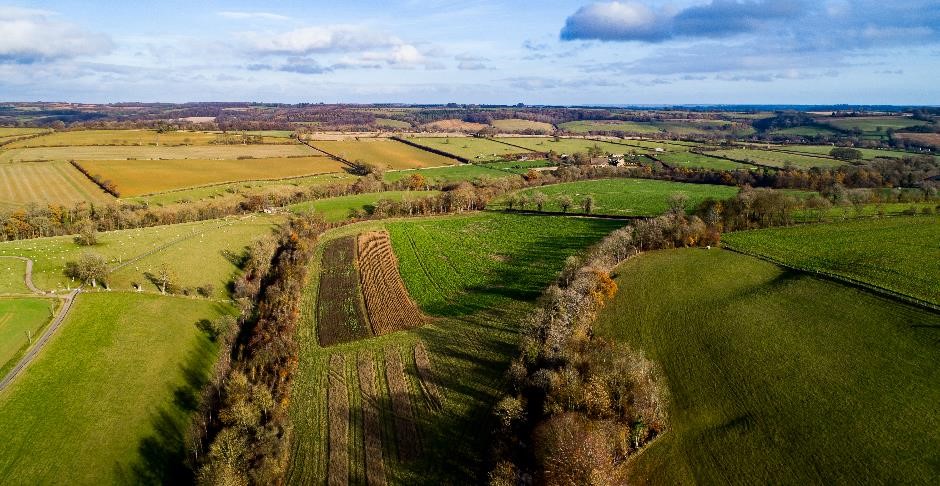
Image: Squashed Robot Films
This week, the Cotswolds National Landscape Board has submitted its formal response to the government consultation around the Landscapes Review. The review was led by Julian Glover, and published in 2019, with an official government response delayed until 2022 by the pandemic. Following the government response, a public consultation ran until early April this year.
The response to the consultation from Cotswolds National Landscape focused on ensuring the nation’s protected landscapes (National Parks and Areas of Outstanding Natural Beauty) meet the challenges of today and tomorrow. Andy Parsons, Chief Executive, explained “for these treasured places to remain relevant we have to consider the key drivers of change – such as nature recovery, climate change, public health and enabling more connected communities. It is no longer enough to simply conserve and enhance natural beauty, we must recognise that all landscapes will evolve.” A priority for the Cotswolds will be to support farmers and land managers through a period of transition post-Brexit. The Cotswolds National Landscape team will champion environmental land management schemes that work for all farmers and land managers, and the early signs of its potential are encouraging, demonstrated through the hugely successful Farming in Protected Landscapes programme.
Many residents in the Cotswolds will be aware that, for some time now, there has been a discussion around redesignation of the Cotswolds from an Area of Outstanding Natural Beauty (AONB) to a National Park. There are many strong feelings for and against this – not least because the AONB covers a massive area (790 sq miles) and it doesn’t sit within any one local authority, indeed there are 15 district, county and unitary boundaries within the AONB. The Landscapes Review identified “strong candidates” for redesignation, including the Cotswolds. It suggested that Natural England and ministers considered the case for each candidate.
In its response to the Landscapes Review, Government hasn’t explicitly identified a possibility for a change in designation for the Cotswolds. Instead, Natural England has set up a Landscapes Advisory Panel, which is tasked with looking at designations at a national level across the whole of England. This work could possibly include reviewing the case for new AONB designations, and for potential redesignation from AONB to National Park for a small number of English landscapes, including the Cotswolds. The Chairman of the Cotswolds National Landscape Board, Brendan McCarthy, says “we look forward to participating in this review to ensure that our protected landscapes are fit for the 21st century, and that they best serve the needs of the local people, communities and nature throughout the whole of the Cotswolds National Landscape”.
The Cotswolds National Landscape team is looking forward to this new era for protected landscapes and acknowledge that to achieve success there will need to be a big team effort, working in partnership with Defra, local authorities, charities, businesses and local communities and individuals. The outcomes of the consultation will be published later in the year.
ENDS
Notes to editors:
- Please contact Alana Hopkins at hopkins@cotswolds-nl.org.uk for further information or interview opportunities.
- The Cotswolds National Landscape was designated an Area of Outstanding Natural Beauty (AONB) in 1966 in recognition of its rich, diverse and high quality landscape. www.cotswolds-nl.org.uk
- The Cotswolds National Landscape is looked after by an independent organisation (officially titled Cotswolds Conservation Board) established in 2004 which has a small employee team along with 37 board members – 15 nominated by local authorities, 8 by parish councils and 14 appointed by the Secretary of State.
- The Cotswolds is the third largest protected landscape in England after the Lake District and Yorkshire Dales National Parks and represents 10% of the total AONB area in the UK. It covers 2,038 square kilometres (790 square miles), stretching from Warwickshire and Worcestershire in the north, through Gloucestershire and Oxfordshire, down to Bath and Wiltshire in the south.
- Areas of Outstanding Natural Beauty (AONB), along with National Parks, are considered to be the most special landscapes in the country and belong to an international family of protected areas. There are 38 AONBs in England and Wales, and a further eight in Northern Ireland. For further details, visit: www.landscapesforlife.org.uk. For details of the 15 National Parks in the UK visit: www.nationalparks.uk
